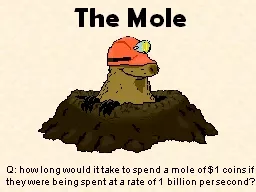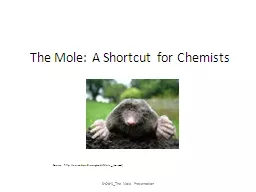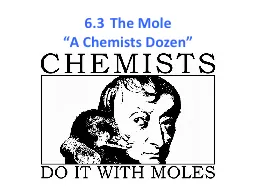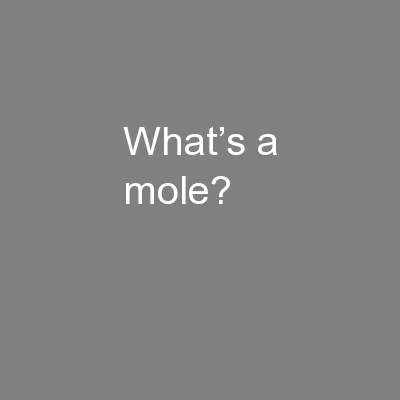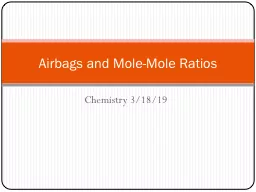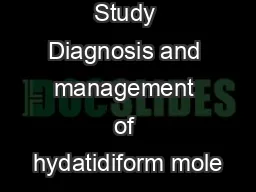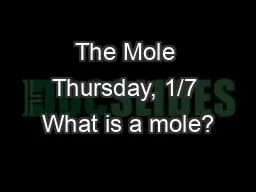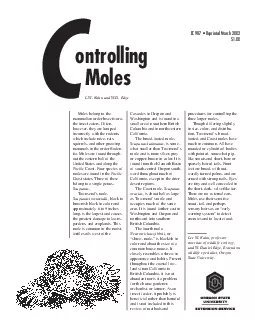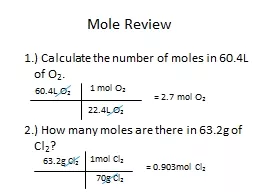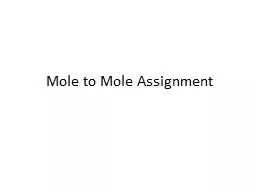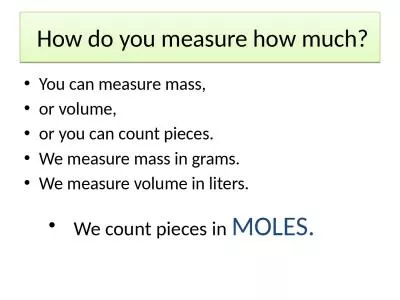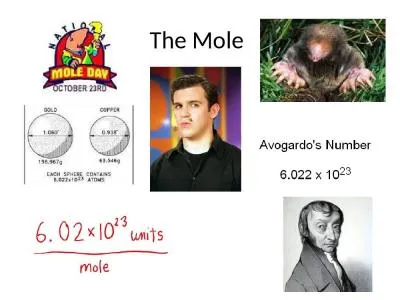PPT-The Mole
Author : karlyn-bohler | Published Date : 2016-11-21
Q how long would it take to spend a mole of 1 coins if they were being spent at a rate of 1 billion per second Background atomic masses Look at the atomic masses
Presentation Embed Code
Download Presentation
Download Presentation The PPT/PDF document "The Mole" is the property of its rightful owner. Permission is granted to download and print the materials on this website for personal, non-commercial use only, and to display it on your personal computer provided you do not modify the materials and that you retain all copyright notices contained in the materials. By downloading content from our website, you accept the terms of this agreement.
The Mole: Transcript
Download Rules Of Document
"The Mole"The content belongs to its owner. You may download and print it for personal use, without modification, and keep all copyright notices. By downloading, you agree to these terms.
Related Documents

